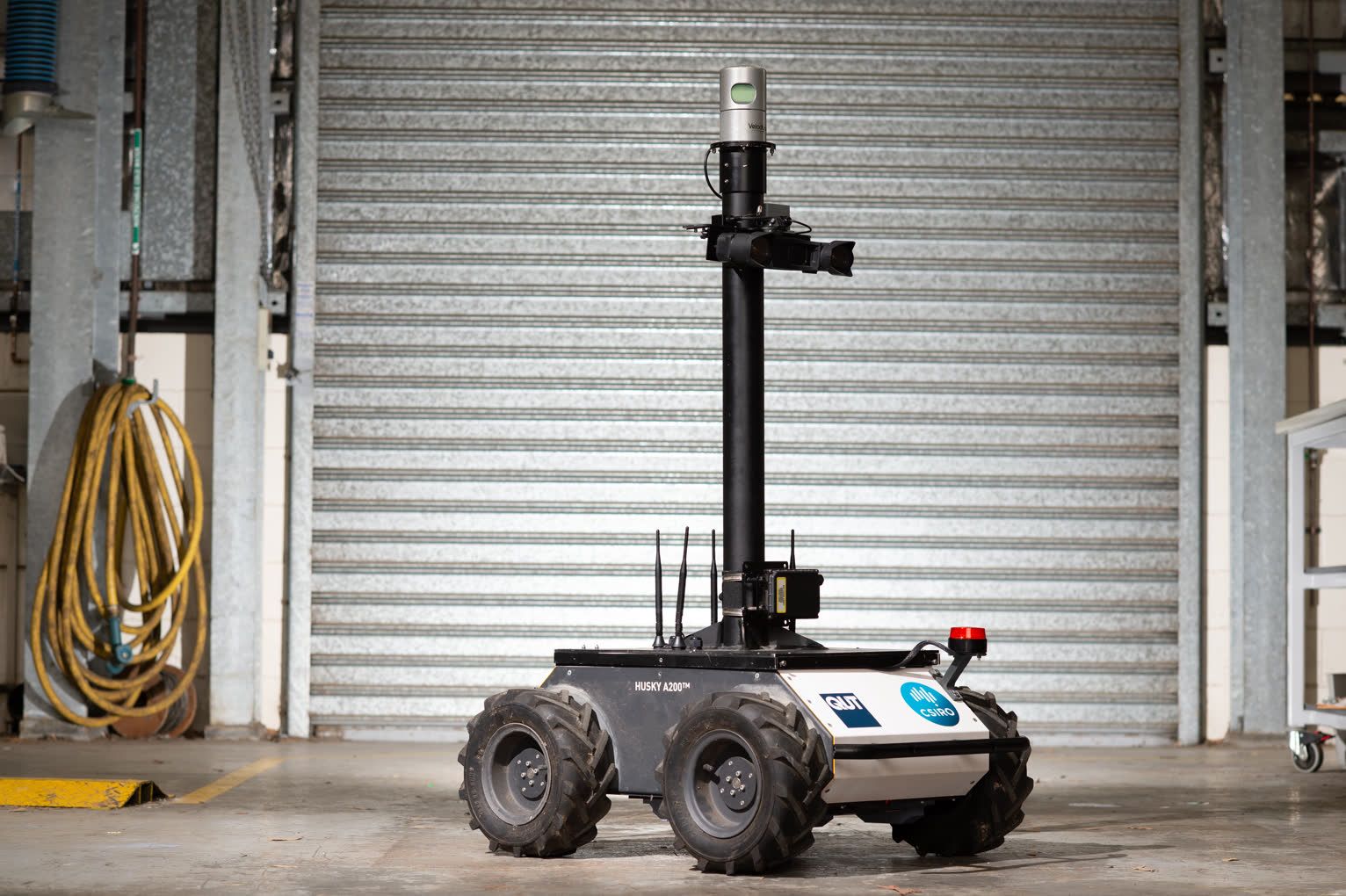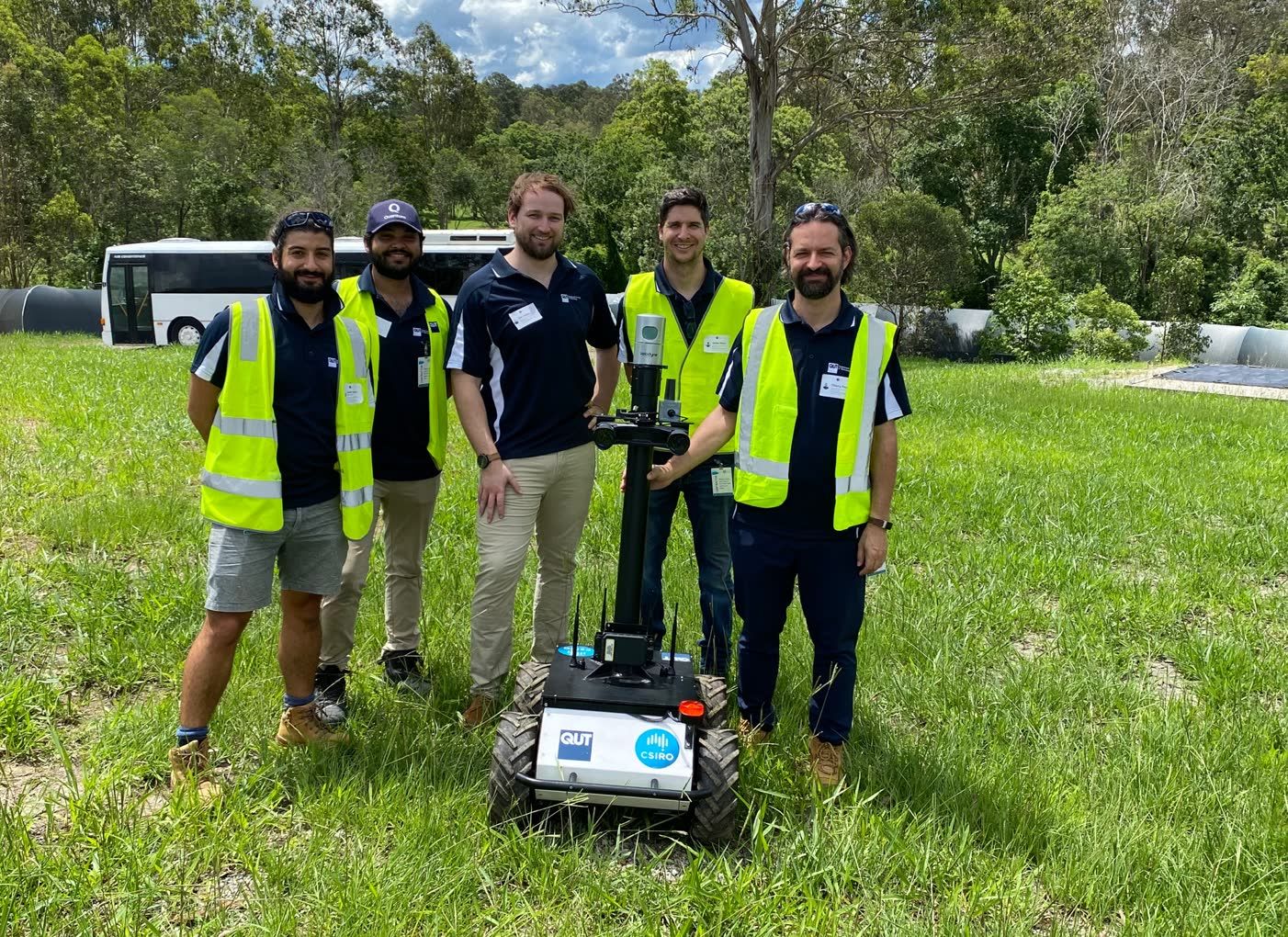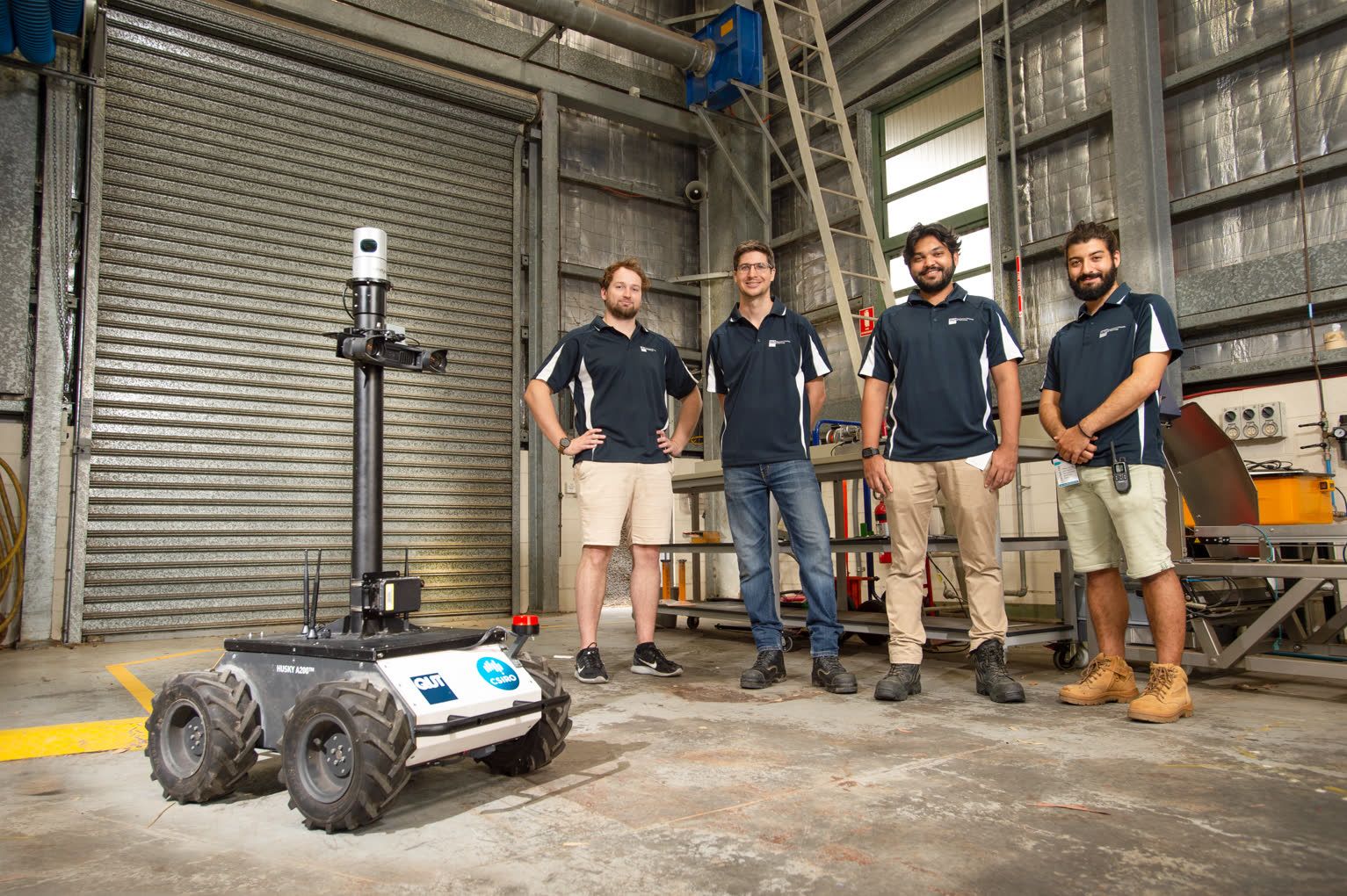Prototyping a QUT Lunar Rover
Commenced
29 July 2021
Last updated
3 December 2021
29 July 2021
I joined the team working on the QUT lunar rover prototype
3 December 2021
Live demonstration presented of prototype system as part of CSIRO's open event for its In-Situ Resource Utilisation (ISRU) facility

In this project, we created a prototype lunar rover. The rover was demonstrated two months after the Australian Space Agency signed a deal with NASA to send an Australian-built rover to the moon for exploring lunar surfaces. Researchers around the country have begun developing bids to be part of this "Trailblazer" program, with a launch due for 2026.
The rover prototype was QUT's initial steps in their bid to be part of the program. I was part of this QUT research team, pictured below, which was led by Thierry Peynot (far right).

We demonstrated a trial of our lunar rover in conjunction with the Commonwealth Scientific and Industrial Research Organisation's (CSIRO) official unveiling of their In-situ Resource Utilisation (ISRU) facility in Brisbane. The purpose-built facility is designed to simulate conditions on the surface of the Moon, including the fine abrasive dust which can cause havoc with equipment and electronics.
Our demonstration showcased the rover's autonomous navigation and perception system, with behaviour trees from my ROS trees library used to orchestrate the system's behaviours. The long-term goal is for the system to operate autonomously on the Moon with minimal human assistance.
The demonstration is part of a broader collaboration between QUT and Boeing, with Boeing providing expertise in aerospace engineering to advance the testing. The video below shows our preliminary configuration and testing of the rover in the days preceding CSIRO's ISRU facility unveiling.
This project was the first steps in QUT's longer-term ambitions to be part of Australia's space race. Since this demonstration, QUT has announced a $5 million space technology precinct with a 20 x 10m lunar testbed and led the development of a logistics robot for use on the International Space Station (ISS). It's exciting times for space robotics at QUT's Centre for Robotics (QCR), and Australia in general.

Supporters
© Ben Talbot. All rights reserved.





